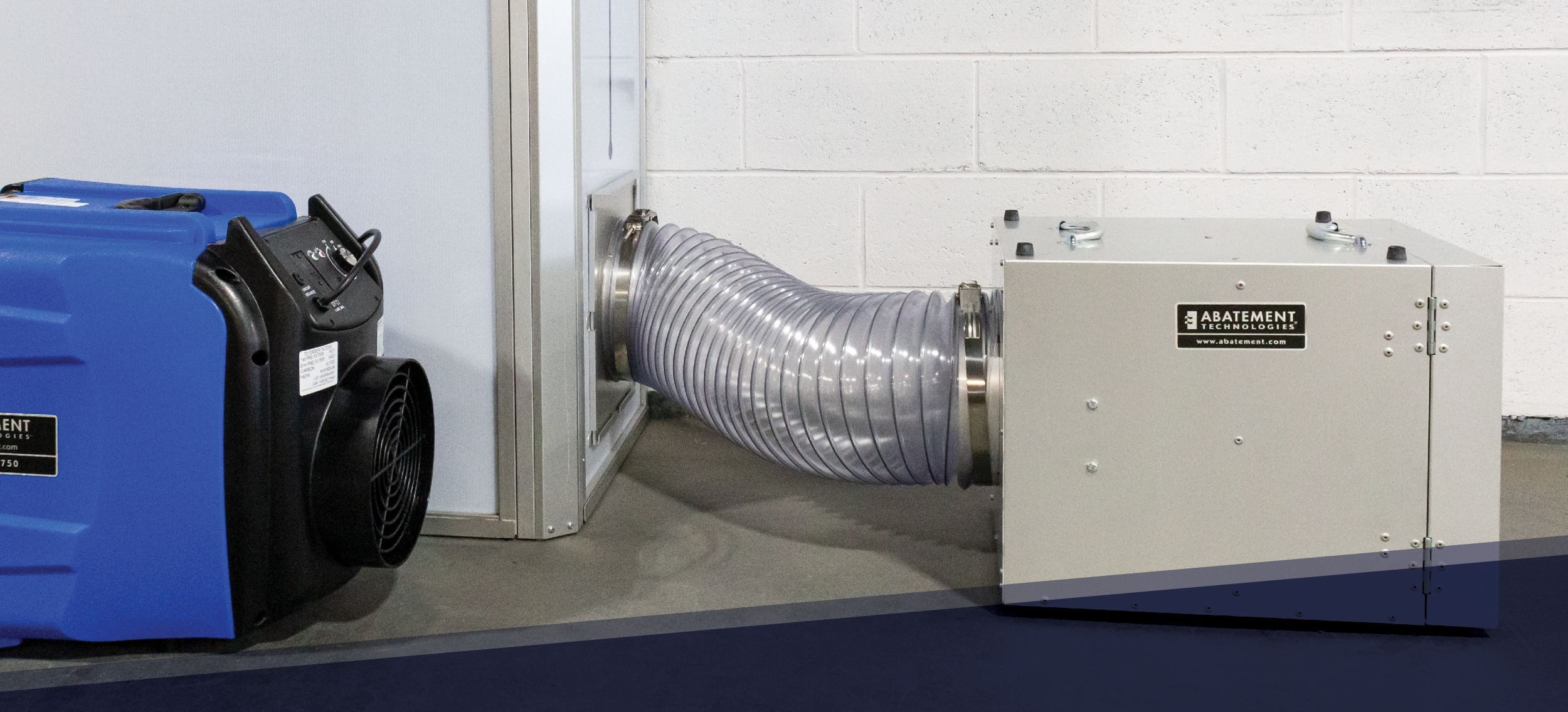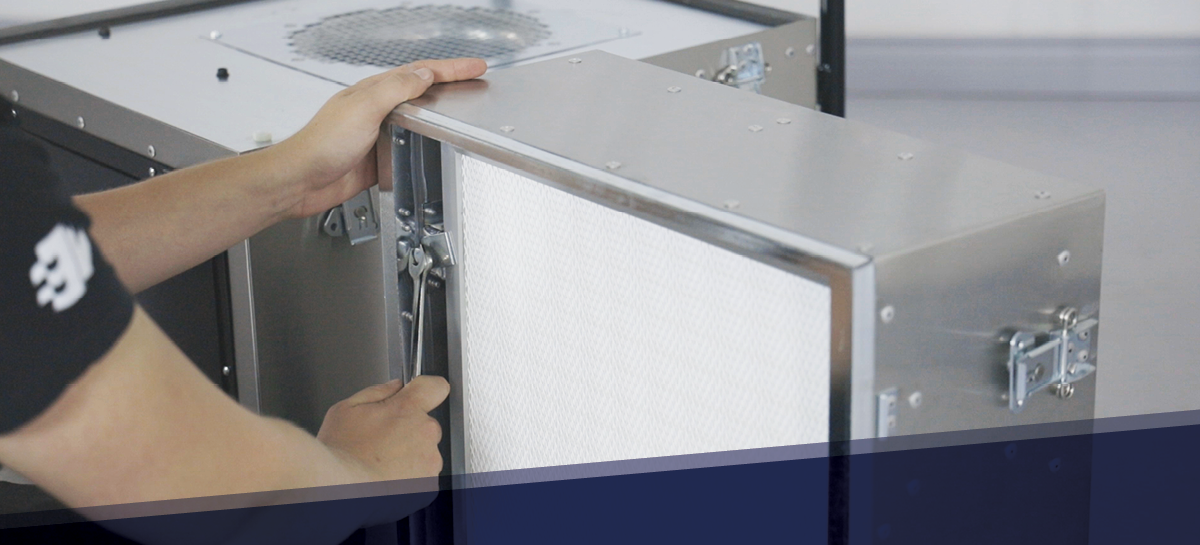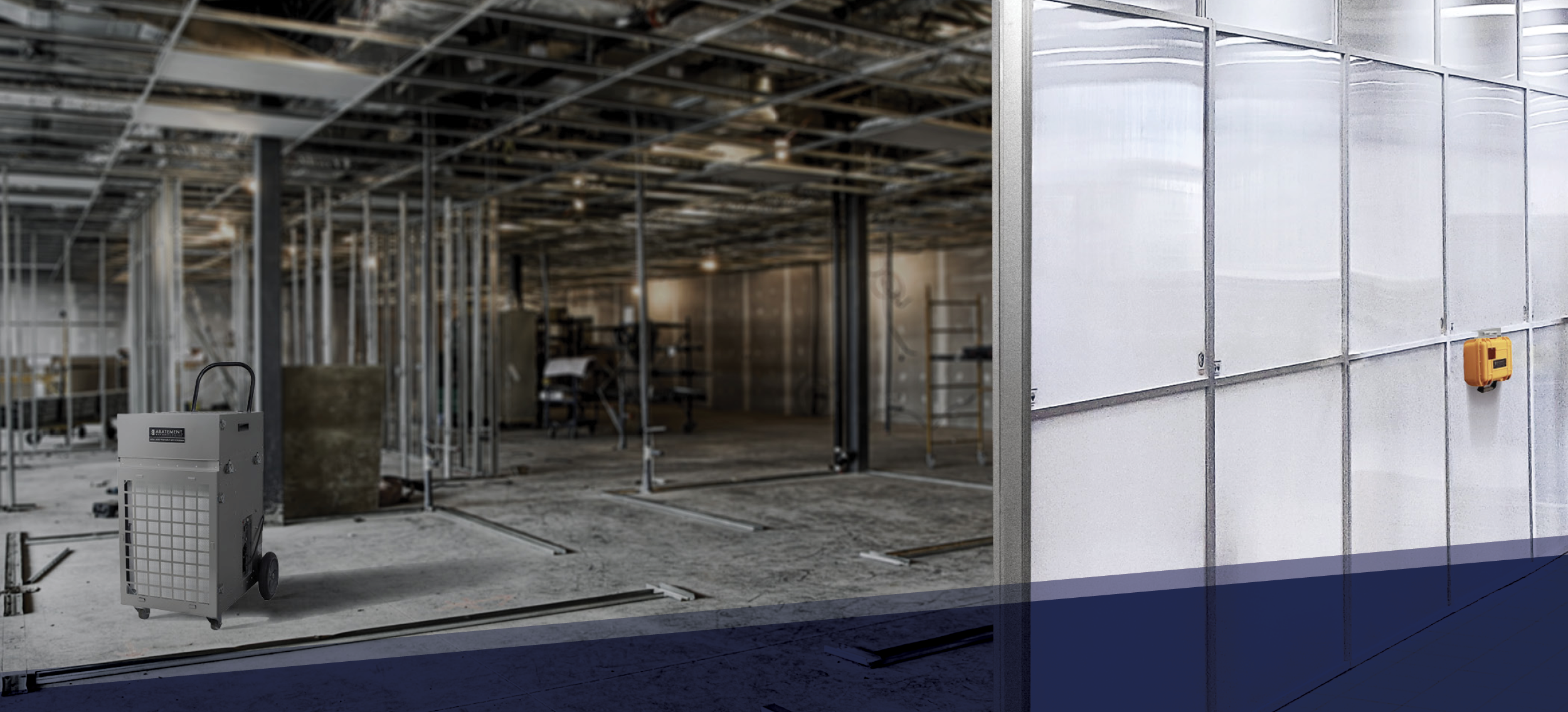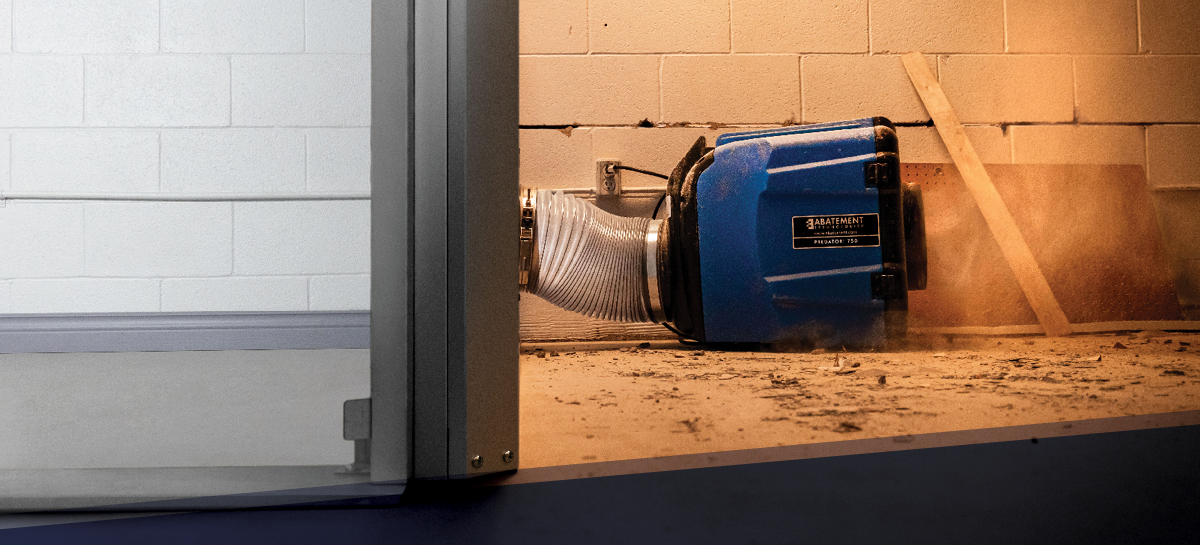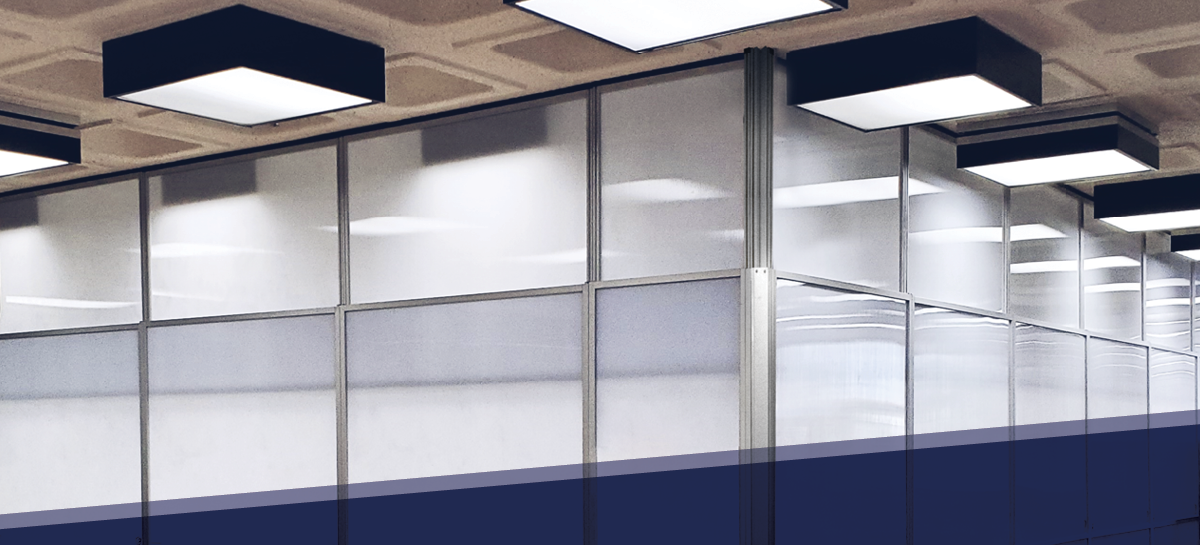Airflow ratings can be very misleading: The cheapest units are often the most costly
When purchasing portable air scrubbers for use on restoration and/or mold remediation projects, there are many factors that should be considered in selecting the proper piece of equipment. Too many times airflow (or claimed airflow) and price are the only issues considered before a purchase. All too often the contractor finds that the equipment does not meet their expectations or needs when it arrives.
1. Ease of transport
This is one of the most important, yet most overlooked, aspects of portable air scrubbers. Scrubbers must constantly be moved from job to job and from location to location during a project. Some units are designed for one-person operation; others may require two people to move. Weight is very important, but so is weight distribution. Scrubbers that include a transport system for easy movement by one operator are safer and more cost-effective to operate. A stair climber is also a valuable feature when stairs are a factor. Size and weight should also be considered when thinking about transport and vehicle requirements.
2. Air scrubber filtration system
The filtration system is the heart of a portable air scrubber. Poorly designed filtration can add hundreds or even thousands of dollars in annual operating costs. Filters must provide a substantial dirt-holding capacity and long filter life without significant airflow loss. A well-designed filtration system requires three stages of filters to progressively filter all particle sizes. If odors and particulates are to be removed simultaneously, a fourth stage of gas/odor filtration may also be needed.
Easy “no tools” access is important when inspecting and replacing dirty filters. The filter module should not have to be removed to change or inspect filters. This is time consuming and can also cause debris to be spilled onto the HEPA and the surrounding area.
HEPA filters must be individually tested by the filter manufacturer and certified to a minimum efficiency of 99.97% at 0.3 microns. It is not enough to simply assemble a filter using HEPA media. A true HEPA filter must be constructed to the exact manufacturing practices necessary to ensure that the finished filter does not leak through the filter media or around the frame or seams. If debris can bypass the HEPA media, the filter will not pass DOP testing required in many abatement specifications. Insist that the HEPA filter itself be certified to HEPA standards, with a certification label affixed to the frame of the HEPA filter.
3. Blower type
Air scrubbers are required to trap large quantities of debris. Debris buildup on the filters hinders the airflow and causes what is technically known as static resistance. Specific blowers are much better suited than others for overcoming this resistance. There are many types of air moving blowers available, each with specific characteristics for certain applications.
For example, forward-inclined “squirrel cage” blowers are designed to move large volumes of relatively clean air and low static resistance. These inexpensive blowers may be suitable for applications such as use in a furnace or even in an asbestos negative air machine; they are not, however, a very good selection for use in an air scrubber.
Backward-inclined or airfoil type blowers are a much better choice since they are engineered with the capacity to overcome the pressure drop of dirty filters. The use of this type of blower will not only increase filter life but will also produce higher airflow as the filters begin to accumulate debris. This generally means significantly better performance (airflow) over the life of the filters and much lower replacement filter expenses than a scrubber or negative air machine that is equipped with a forward inclined blower with a comparable peak airflow rating.
4. Materials and construction methods
Most negative air machines position the blower at the outlet of the cabinet, and pull air through the cabinet. This keeps the entire cabinet – including the section downstream from the HEPA filter - under lower (negative) pressure compared to the air in the surrounding area. With this design, the machine must be perfectly sealed to prevent contaminated air from being sucked into the cabinet and exhausted without ever passing through the HEPA.
This is a big concern when the unit is used as a negative air machine and exhausts air into another part of the facility, especially if that area is occupied. Any such leaks will negate the effectiveness of the HEPA filter and will more than likely cause contamination of the area and failure of any air testing required by the job specification. This should be an important liability concern of any mold abatement contractor.
Generally, the use of gaskets and solid rivets produce the most leak free cabinets. Beware of any cabinet that uses fasteners such as hollow pop rivets, or threaded fasteners such as sheet metal screws or nuts and bolts. These devices do not afford the airtight seal necessary to keep small particles from infiltrating a negative pressure cabinet.
Fun fact: It has been found that sub-micron particles can actually travel along the threads of a screw or bolt!
Lastly, make certain that any hardware, instruments, or transport system components that penetrate into the cabinet are sealed in such a way as to prevent any leakage or bypass. For more information on evaluating portable air scrubbers contact us!

